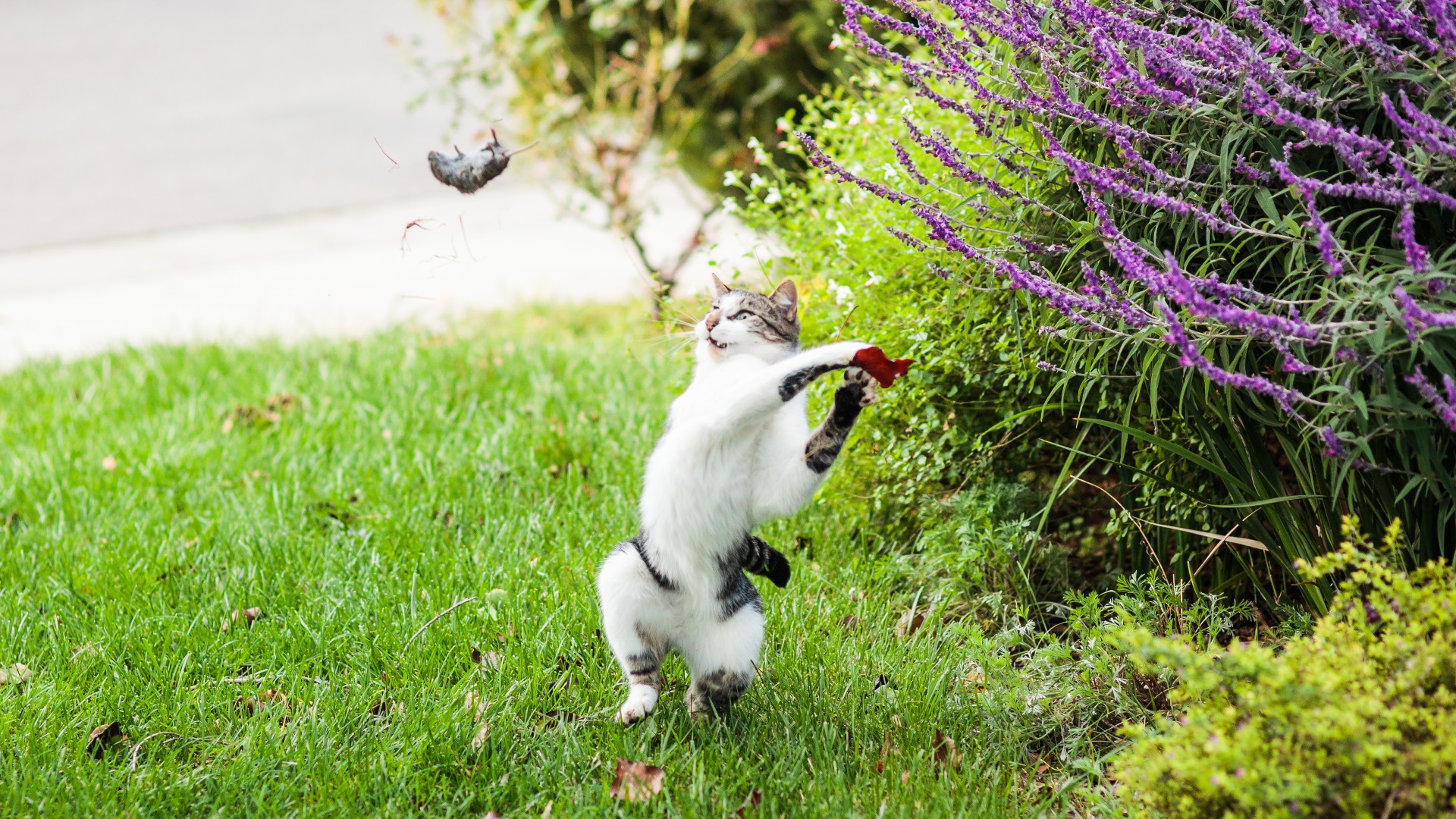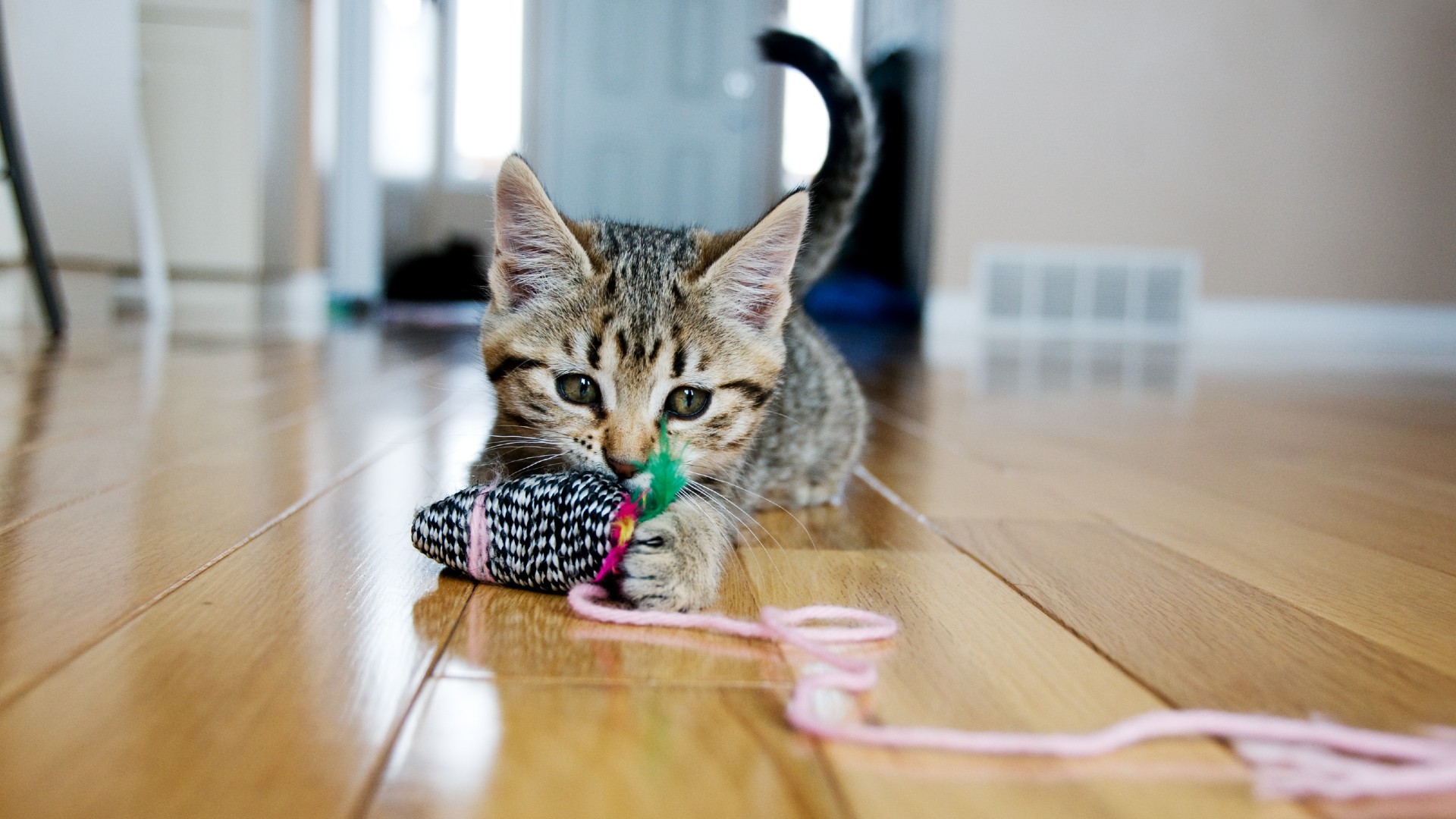
Why do cats 'play' with their prey?
Are cats harmless fuzzballs or killing machines?

If you've ever owned an outdoor cat, you've likely seen your feline friend's predatory instincts in action: While wandering through the yard, your kitty suddenly leaps forward, batting at a small bird or mouse, perhaps a lizard. The feline toys with this creature for several minutes, knocking it to and fro long after it stops moving. Then, they pick up their prize, trot to the front door and lay a tiny carcass on the welcome mat.
For cat owners, this behavior is proof that their feline furballs are lovable, if misguided, doofuses. But for many conservationists, this is the act of an invasive killing machine with four feet full of knives. This difference in perception has sparked a fierce debate between conservationists and cat enthusiasts over whether cats should be allowed outdoors.
But why do domestic cats chase down and play with prey even after it's dead? Are they adorable himbos or furry serial killers? The truth lies somewhere in between.
Related: Why do dogs and cats run around in random bursts of speed?
To answer this question, we need to look at cat domestication. The first wild cats to take a tentative step toward domestication probably did so around 8,000 years ago in Egypt and its surrounding regions, according to a 2017 study published in the journal Nature Ecology and Evolution. These cats were members of the species Felis silvestris lybica, also known as African wildcats, and were attracted to cities by the rats they hunted for food. Humans, in turn, kept these cats around because they controlled disease-spreading and grain-eating rodent populations. In certain societies, such as ancient Egypt and China, these feline companions came to be considered lucky or even revered.
But while we've lived alongside our feline companions for thousands of years, "'true' cat domestication can be traced back only to around 200 years ago," Martina Cecchetti, a conservation scientist who studies cat behavior at the University of Exeter in the U.K., told Live Science. In this context, Cecchetti clarified, "true" domestication means being selectively and intentionally bred by humans, as opposed to simply cohabitating with our species.
Because they were so recently domesticated, cats retain many of the instincts passed down from their wild ancestors, who hunted small prey throughout the day, according to a 2006 study in The Journal of Nutrition. This evolutionary remnant drives a cat "to catch prey even if it is not hungry," Cecchetti said. What's more, a cat's play instincts, such as batting, pouncing and raking with claws, are derived from hunting behavior. Wild cats often play with their prey in order to tire it out before eating it, which reduces the cats' risk of injury. Thanks to these instincts, even modern domestic cat breeds can survive relatively easily in the wild — some Polish populations have been so successful, they are now considered invasive pests, reported WBUR, Boston's National Public Radio station.
Sign up for the Live Science daily newsletter now
Get the world’s most fascinating discoveries delivered straight to your inbox.
Studies show that domestic cats left to roam around outside can cause serious environmental disruption. One 2013 study in the journal Nature Communications estimated that cats kill upward of 1.3 billion birds and 6.3 billion small mammals each year in the United States alone, with the majority of the killings perpetrated by the country's 30 million to 80 million unowned cats, which include farm cats, feral cats and strays that are fed by humans, the researchers wrote in the study.

So how can people stop their furry friends from causing so much ecological damage? Cecchetti's research suggests that some of a pet cat's drive to hunt can be stymied by providing them adequate play time at home and feeding them high-quality, meat-rich diets that provide the right micronutrient balance.
"Domestic cats are obligate carnivores," Cecchetti said, so if they aren't getting enough meat at home, they may seek it out elsewhere.
Should you choose to provide food for feral cats, the Humane Society recommends calling in a trap-neuter-return (or TNR) program. These programs temporarily capture feral cats, spay or neuter them, vaccinate them against rabies, identify them with an ear tip (removal of the top quarter-inch of the left ear while under anesthesia) and return them to the area where they were found if local shelters can't accommodate them. This process helps to control the population of unowned cats, which, in turn, can reduce the number of wild creatures they kill.
But perhaps the best way to ensure that your feline friend doesn't run amok on your local ecosystem is to keep it indoors (with plenty of toys and 20 square feet, or 1.8 square meters, of space at the bare minimum) or take it outside on a leash. That way, it can unleash its hunting instincts to its heart's content — without sacrificing the neighborhood wildlife.
Originally published on Live Science.

Joanna Thompson is a science journalist and runner based in New York. She holds a B.S. in Zoology and a B.A. in Creative Writing from North Carolina State University, as well as a Master's in Science Journalism from NYU's Science, Health and Environmental Reporting Program. Find more of her work in Scientific American, The Daily Beast, Atlas Obscura or Audubon Magazine.









